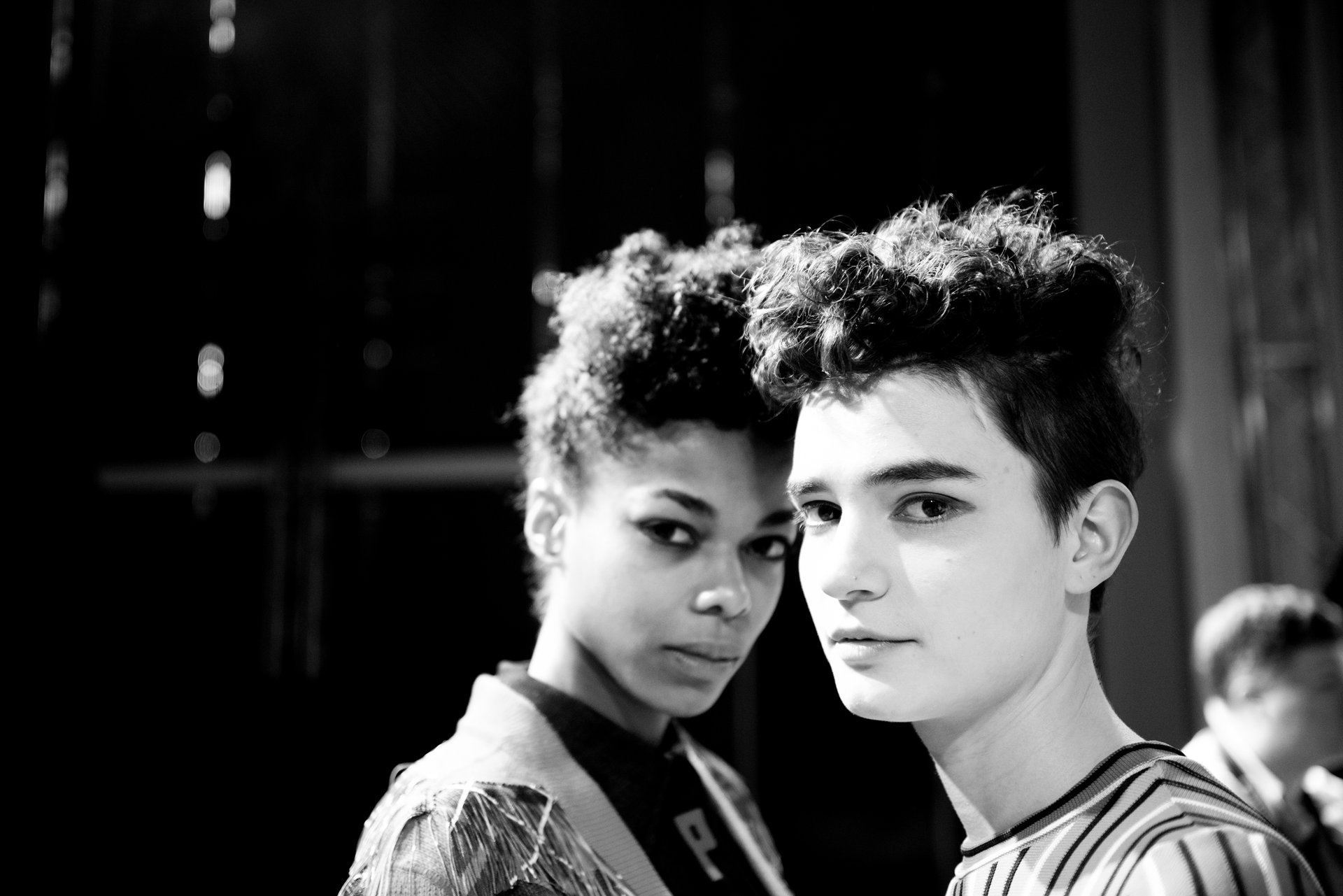Being backstage at a fashion show is an extraordinary experience — the people, the energy, the excitement, the pure creativity and even the feelings of sheer terror all come together to produce runway magic. On stage, fashion seems to be championing diversity, and Black models are forging a prominent place on the catwalk. Getting there is a continuous hard-fought battle but this transformation not only elevates how mainstream Maisons present their collections, but also exemplifies the visionary nature of fashion and its role in reflecting the kind of world most of us live in (or hopefully want to live in).
However, more often than you might imagine, the backstage experience for models of color is disheartening and even humiliating. The fact is, a remarkable number of backstage session artists are inexperienced working with textured hair, or come to set with an incomplete range of makeup to match all skin tones. Scores of Black models can attest to working on their own hair before shows or shoots. A classic line you hear backstage is “Just leave the hair like that’ while anyone knowledgeable in textured hair (including the model) knows that their hair needs to be freshened up.
Black models often sit in the chair of stylists not versed in textured hair and have to endure comments such as “I don’t do black hair,” “I’m not touching it,” or even worse, suffering with a stylist who has no idea what they are doing. It’s also unfair that darker skinned models feel the necessity to bring their own foundations, concealers, even blushes because an alarming amount of professional makeup artists do not carry the full range of colors.
Let’s face it, Black models’ basic needs are not being met, and they are left feeling “less than” the average white model, who is likely sitting in the chair right beside them having their hair or makeup done without these kinds of issues.
As the adage goes, “If diversity is being invited to the party, inclusion is being asked to dance.” So just because there is more diversity on the runways doesn’t mean there is more inclusivity backstage and this is a big problem.
What are the solutions? They’re actually quite simple:
Solution 1:
All licensed hair professionals working backstage or on set should be versed in all hair types, and come with tools and products that are formulated for both naturally straight and textured hair, no excuses.
While some key hairstylists have taken steps to include more Black artists on their teams, the fact remains that all hair stylists should know how to work with textured hair, not just the black stylists who are able work with all textures.
Solution 2:
All makeup artists on fashion shows and shoots must arrive on the job with a full range of products for all skin tones, again, no excuses.
As CEO of Show Division, the number one provider of backstage artistic support and logistics for the top fashion shows worldwide, I represent over 250 artists including session stylists, make-up artists and nail technicians. The responsibility for inclusivity should not lay solely with the artists; hair/makeup agencies and producers need be held accountable too. Artists need to be vetted prior to arriving on set to work with textured hair and given instruction to have a full and inclusive kit.
Diversity is part of the DNA of Show Division, and inequity is an issue they have been tackling head on. Having seen the issues firsthand, the company has created an initiative to ensure the long-term transformation of backstage culture into a more inclusive and equitable system. Working with the big four; the CFDA in the United States, Camera Moda in Milan, The British Fashion Council in London and FHCM in Paris, we’re looking to have these changes implemented backstage. I believe it is crucial that the major governing bodies be accountable and part of the solution.
For those Session stylists who need more training, we offer courses, workshops and instruction. Soon, we will be providing products and tools to help artists hone their skills styling textured hair. We are committed to representing skilled artists from around the globe regardless of race, background or gender identity and vet each artist’s skill level.
It’s not rocket science. But if adopted, these two basic measures would be galvanizing steps towards meeting the challenges of diversity and inclusion in our industry.
These are remarkable times. Fortunately, fashion is an extraordinary industry, and now more than ever, there seems to be a willingness on all levels, from the artists to the boardrooms, to listen and make diversity and inclusivity a priority.
You’ve invited us to the party. Now just ask us to dance.
For more information about Show Division, please contact info@showdivision.com



